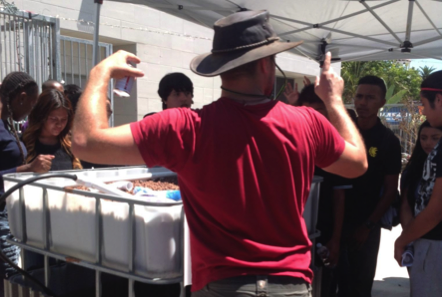By: Tom McClintock
Cultures around the world have been creating images in caves and other rock surfaces for at least 34,000 years. Whether their purpose was aesthetic or functional, these images represent some of the earliest known, and in some cases the best preserved, artistic expressions of prehistoric people.
Many indigenous cultures have rich traditions of creating rock images, especially in California. To contemporary indigenous people, the sites that feature these images continue to be regarded as sacred. But these images are increasingly threatened by development, over-visitation and natural deterioration. How can these sites be cared for?
This question is at the heart of my research on Catalina Island, where I will be conducting original documentation and condition assessment for a number of rock image sites.
The first step has been, necessarily, to consult with the Tongva community – the original inhabitants of the island – to determine their vision for the future of these sacred sites. This was a component of this summer’s Pimu Catalina Island Archaeological Project (PCIAP) field school course, hosted at the WMSC, whose focus was teaching the fundamentals of indigenous archaeology. Through the course, I was able to both establish a connection with the Tongva community and to instruct students from diverse educational backgrounds in the fundamentals of “condition assessment” of rock image sites and documentation photography.
Technology has played an important role in this summer’s research. We used Decorellation Stretch, a program that allows the user to manipulate digital photographs based on minute differences in Red/Green/Blue values for each pixel. From these enhanced images, entirely new surfaces have been identified for further study, leading to a better understanding of the site’s original appearance to the Tongva.
After a successful and productive season with PCIAP’s field school, a complete condition assessment has been performed for a number of rock image sites. This includes assessing not only the tangible elements of the image panels (such as the quality of the rock substrate and the condition of the images’ pigment), but also the intangible (such as the integrity of the landscape and the sites’ accessibility), which are of equal importance to the preservation of the sites’ significance. Gauging these qualities, along with performing photographic documentation, represent the first portion of my research.
This summer’s work will be followed by continued consultation with the Tongva community, as well as the Catalina Island Conservancy (who own the land) and the island community, to explore what measures can be taken to best protect these sacred sites.
Tom is a graduate student in the UCLA/Getty Master’s Program in the “Conservation of Archaeological and Ethnographic Materials”. He attended the Wrigley Marine Science Center this summer as part of the Pimu Catalina Island Archaeological Field School.







